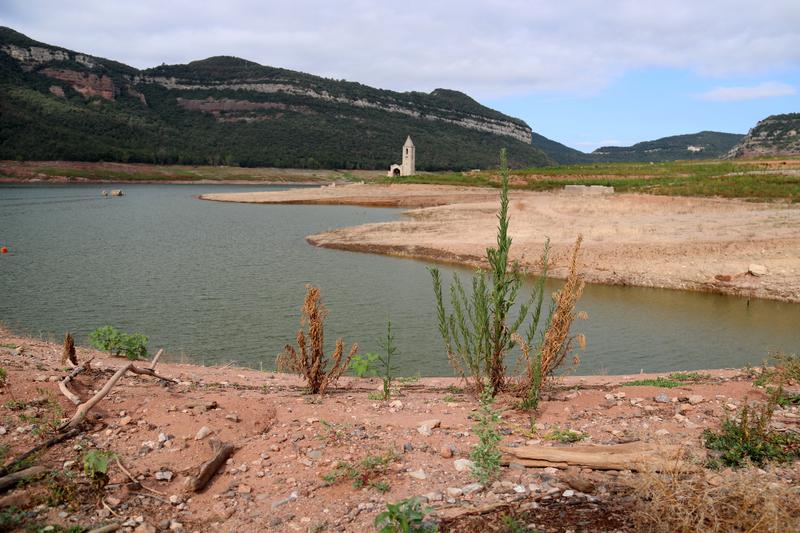Water level in Catalonia's internal reservoirs falls below 2008 drought record low to 21%
Ebre river network reservoirs are at 31% capacity, approaching lowest level in 25 years

The water level in the reservoirs of Catalonia's internal drainage basins has fallen below the record low registered during the 2008 drought.
According to data released by the Catalan Water Agency (ACA) on Monday, the overall level in the reservoirs is now 21.03%, lower than on March 31, 2008 (21.05%), which was the most critical moment during the drought 15 years ago.
In fact, the current volume of water has not been seen since the beginning of the century.
The ACA points out that desalination plants have enabled the effects of the drought to be delayed by "about six months."
The situation in the reservoirs of the Ebre river system, managed by Spain's Ebre Hydrographic Confederation (CHE), is also deemed "exceptional".
Water levels there are around 31%, close to the all-time low of 30.45%, also recorded in 2008.
Nearing emergency situation
Water reserves in areas managed by the ACA has now fallen below the threshold of exceptionality (25%) for the second time in history, after the drought of 2008, and is approaching an emergency situation (16% of reserves), which has never been reached to date.
Levels have not fallen continually since May 2021, except for two spikes that coincided with periods of rain, in the spring of 2022 and in June this year.
Before the current crisis, levels were healthy, especially after Storm Gloria in January 2020, when reserves rose from 75% to close to 100% of capacity.
Darnius Boadella reservoir in the north of Catalonia and Riudecanyes reservoir in the south are both at their lowest level since data began been collected, at 15.9% and 4.5% respectively.
Desalination plants and regenerated water
The current drought is "much longer and more severe" than the one 15 years ago, a source from the ACA told the Catalan News Agency (ACN).
Currently, there has been little rainfall for more than 30 months, while in the 2008 drought, the lack of rain lasted 18 months.
It has taken longer for water levels to reach the same level mainly thanks to the expansion of capacity at Tordera desalination plant.
Furthermore, in 2022 and 2023 around 70 hm3 of regenerated water has been produced in the final section of the Llobregat river.
"15 years ago we didn't have the infrastructure we have now, so we would have reached the emergency situation months ago," the ACA source said.